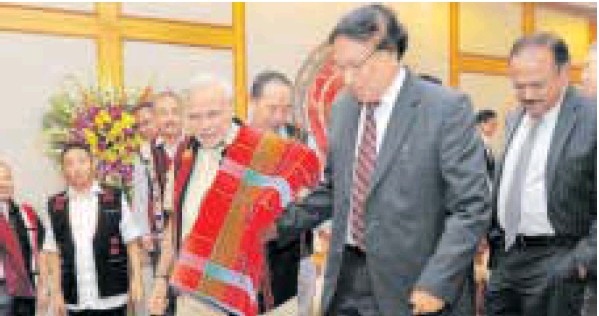- The Many Sticking Points In The Naga Peace Process



Sudeep Chakravarti
There can be no effective Naga peace accord without NSCN (K) being taken on board
Adevelopment in Myanmar with National Socialist Council of Nagalim’s Khaplang faction, or NSCN (K), is a likely marker for the way matters of war and peace head in that country as well as in India, with which NSCN (K) is in active conflict. In particular, with the peace process announced with fanfare by the BJP-led government of India and a rival Naga faction in August 2015, and which has since evolved into a nightmare of exceptionalism that has Nagaland—and Manipur, Arunachal Pradesh and Assam, which also have Naga homelands—on edge.
Earlier this week, during a peace conference with several armed groups representing ethnic nationalities that have a tense relationship with Myanmar’s government, a government official said NSCN (K) would remain outside the purview of the so-called Nationwide Ceasefire Agreement (NCA). That agreement was signed by eight such armed groups in 2015, during the term of the former military junta. NSCN (K) kept away from the NCA as well as an ongoing series of peace talks with ethnic groups pushed by the present National League for Democracy government, which continues to use NCA as a pivot. In part, NSCN (K) stayed away from NCA because it had signed a separate ceasefire with the junta in 2012. But more so because it has held on to its demand for sovereignty, an independent Naga homeland in Myanmar as well as across the border in India. In both countries, what was seen in 2012 as a way to peace with NSCN (K) is now seen as a hurdle to peace. In Nagaland, and even Arunachal Pradesh and Manipur, the faction maintains an emphatic footprint. It broke away from a ceasefire with the Indian government in early 2015 and has since engaged India’s army and paramilitaries in fierce skirmishes. NSCN (K) provides sanctuary, weapons and operational logistics to rebel groups from Manipur, the anti-talks faction of Assamese and Bodo rebels, and after jettisoning its ceasefire with India, formed an umbrella organization with these groups. The Khaplang faction has persisted with this approach even after the death of its chief, S.S. Khaplang, in June 2017, and the anointing of Khango Konyak as the successor. Unlike Khaplang, who was a Hemi Naga from Myanmar—which has substantial Naga homelands separated in the Partition years—Konyak is from the eponymous tribe largely located in Nagaland’s Mon district. Meanwhile, the faction’s main rival, the I-M or Isak-Muivah faction, formally entered peace talks with India in August 2015, and there is much speculation in the media that a formal peace deal is imminent. NSCN (I-M) has consistently postured that it is the only legitimate voice of the Naga people and their aspirations. This flies in the face of both eminent logic and public mood in most Naga homelands, besides six relatively minor Naga rebel groups disagreeing and staking their own claims; and, of course, the constant spectre of NSCN (K) as belligerent dissenter to it all.
I would reiterate that there can be no effective Naga peace deal without NSCN (K) on board, let alone other matters of Naga sovereignty and integration that are yet to be sorted—especially the contentious negotiating point with NSCN (I-M) that suggests an overarching politico-cultural organization across Naga homelands in India. It’s a watered-down version of its own formerly inviolate stance that is now held as non-negotiable by its arch rival. The likelihood of even a mild, face-saving version of autonomy has the non-Naga people in Manipur, Arunachal Pradesh and Assam, who comprise the majority, in an uproar. Manipur’s chief minister, Nongthombam Biren Singh, who heads a BJP-led coalition government, announced in New Delhi on 16 July that he and his colleagues would quit the government if their “consent” was not taken for the so-called Naga Accord, or if Manipur’s territorial integrity was in any way threatened.
Can NSCN (K) be pushed by both India and Myanmar to sue formally for peace? More on that, NSCN (I-M), and the ongoing Naga peace drama next week.
This column focuses on conflict situations and the convergence of businesses and human rights, and runs on Thursdays.
DISCLAIMER:
The views expressed in the Article above are Author’s personal views and kashmiribhatta.in is not responsible for the opinions expressed in the above article.
Courtesy: Mint: 19 Jul 2018


